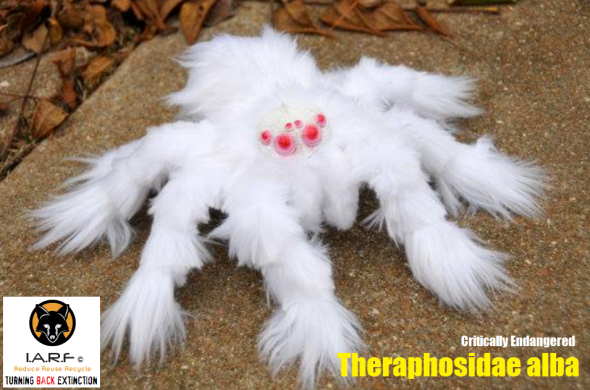
Endangered Species Monday | Theraphosidae alba
Welcome back ladies and gentleman to the (ESP) Speak Up for The Voiceless Publication, printed every Monday, Wednesday and Friday. (Publication 1 (2016): Article No: 403.
Back in 2015 an incredibly rare species of tarantula was located by Dr Grey and his team from the Michigan State University, United States. The species generically identified as the Theraphosidae alba was discovered within the rain forests of Peru, South America. From what we are aware this is the only “albino tarantula” of its kind on the planet, of which is already listed as (critically endangered) on the IUCN RED LIST.
Since the discovery back in 2015 arachnologist’s have been trying to keep the species under wraps due to its rather peculiar toy like teddy bear appearance, and color which scientists believe may encourage arachnid enthusiasts to poach the spider from its habitat for breeding within the pet trade. A census undertaken in 2016 by Dr Gray and his team from the Michigan State University revealed a depressing 400 mature individuals remaining within the wild.
Dr Gray who’s been studying spiders and insects for over three decades stated, “Peruvian tarantulas are on the decline within their endemic habitat. We’ve discovered from 2007-2015 ten Peruvian species nearing extinction within the wild, the T. alba makes it up to eleven species. Furthermore a further eleven species of tarantulas within the United States alone are also nearing endangered. Conversion of land for farming, habitat destruction, deforestation, mining, pulp and paper trade, slash and burn operations, are all contributing to species extinction”
Now lets get back to reality. The spider above is nothing more than a fake hand-made plush teddy bear spider, its neither real nor endangered. The entire description above is complete nonsense written by myself, the University of Michigan doesn’t have from that I am aware a “Dr Gray”, nor have they been working within the Peruvian rain forests investigating arachnids. The only factual data above relates to the eleven species of tarantulas within the United States that are ‘indeed nearing extinction’.
So why lie, what was the purpose of lying to the public in order to create drama, and mass hysteria? The reason for this particular project was to grab the public’s attention in order to show them where they are going wrong and why. On the 24th July 2016 I posted the image above as a social experiment (among others) to evaluate peoples behavior when shown fluffy, cute, cuddly and adorable creatures. The image one can clearly see is indeed fake, however hundreds of people immediately believed (and probably still do believe) that the spider is real.
I deliberately enlarged the image, in the hope that many people would actually believe on witnessing the cuddly teddy spider, that it was indeed fake. Unfortunately this didn’t happen (which is the response I wanted). However the real responses were within the comments section of each share which has helped me understand the way at a different level we humans think on seeing an image, with a short description.
From the start, responses to the image were among others; (shock, awe, Oh my god, how can that be real, is this really real)?. I received email after email from people around the globe asking me where they could find the spider in the wild, down to “shocking emails regarding the legitimacy of the fake spider”. Then we had the trolls, and alleged know it all’s that had to make their point (VERY CLEAR) to hundreds of people commenting on the shared posts. Comments ranged from; (Its a fake spider you twat*s, do your fuc*king research before posting, give credit to the original person that made the spider you selfish cun*,). Nice huh?
Had the abusive trolls opened their eyes and exercised their little brains more, they’d have realized that a environmentalist scientist had posted a fake spider onto a conservation page - that covers endangered species for a specific reason. Moving on, as that is again the response I wanted, I wasn’t just looking for one or two responses but as many as I could harvest for a study that I am conducting on human behavior, and why humans seem to take note of more cuddly and nice animals - over that of not so cuddly and nice animals.
Further responses were exactly what I wanted to see, (people actually using their brain, putting it into action and finally hitting the research option). A large number of people provided to me on various shared posts, (URLs) to the original hand crafted spider, down to whom made that spider, where you can purchase similar plush spiders, and there were even links to the IUCN Red List that proved me wrong, all of which I wanted to see so desperately. But why, what was the whole purpose of wasting the public’s time, communicating misinformation, and arguments online?
The answer is quite simple, thousands of people liked, shared, and gave feed back about the “very obvious fake spider”, which was unique, cuddly looking, sweet, and adorable. Unfortunately the many thousands of people that follow my company organisation do not practice the same behavior in relation to “real animals” that aren’t cuddly, sweet, adorable, or unique. That I find very concerning, a boring African blue swallow for instance that is likely to go extinct within the next few years - received a handful of comments (2014), over a hundred shares, and around three hundred likes. The whole purpose of wasting the public’s time was to crate awareness, not for one species, but all species of flora and fauna that I and my team write about everyday, down to the illegal wildlife trade.
The question I ask is simple:
“WHY ARE WE MORE CONCERNED ABOUT SWEET AND CUDDLY ANIMALS, YET AREN’T THAT CONCERNED ABOUT ANIMALS THAT ARE VISIBLY NOT SWEET OR CUDDLY?”.
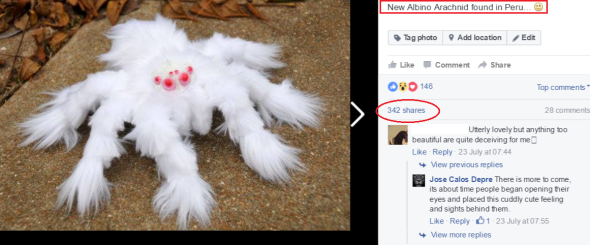
Image: Fake spider.
Within twenty four hours members of the public shared the image above over 342 times (just from my profile). The image would have been shared more had I not decided to inform the “arguing public debating the spiders legitimacy”, and this was just from my own Facebook profile as explained. On many other pages shares went over 2,000+ and climbing.
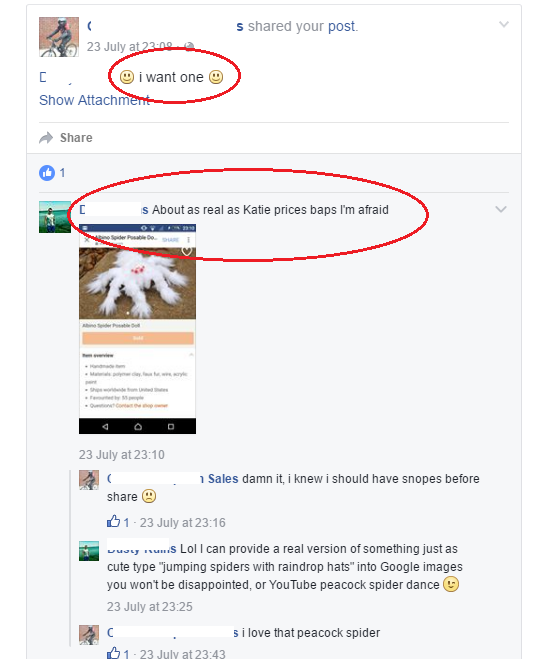
Image: People began wanting, questioning but also researching.
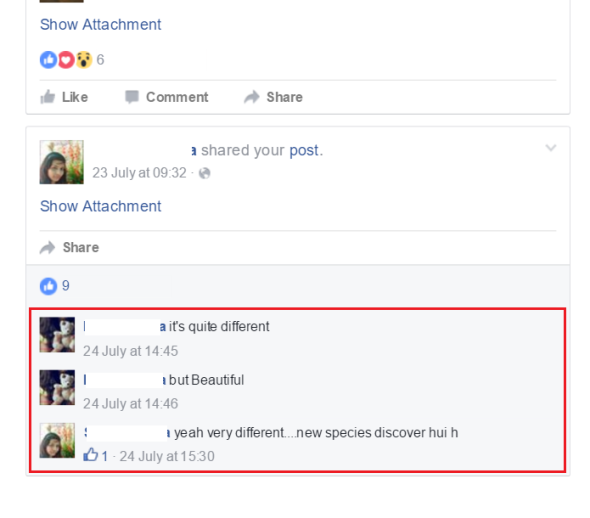
Image: People seem to think the spider is real, more debating which I like.
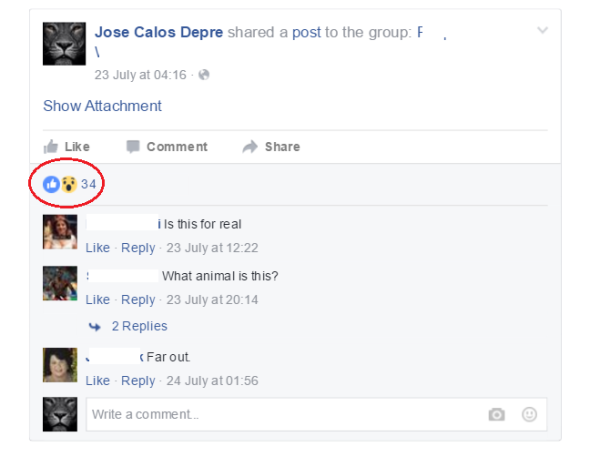
Image: More people question, debate and show curiosity.
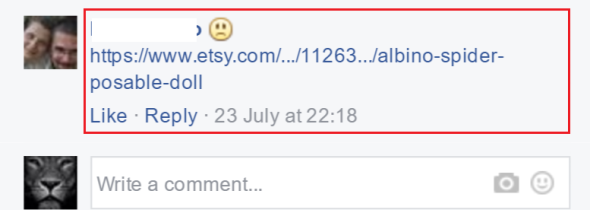
Image: Plenty of people were researching as well, like crazy.
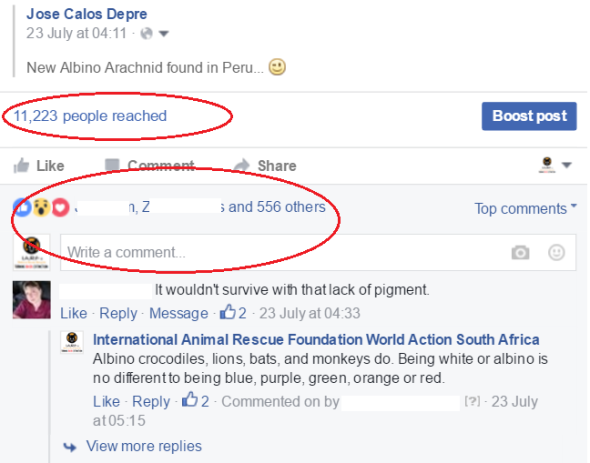
Image: On the IARFA page in 24 hours, 556 liked the post, and thousands more viewed.
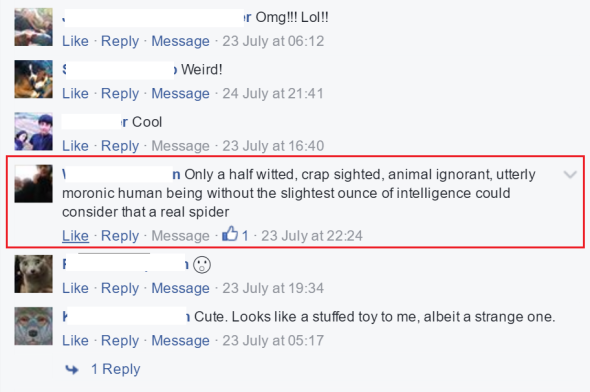
Image: Comments were mixed with abuse, skepticism, wow’s, and - DEBATE.
Since July 24th to date, the post is still being commented on, shared, spoken about, but more importantly - debated. I’m not annoyed or frustrated, angered even with people that wanted to share their views, thoughts, and even research down to informing me that the spider was indeed fake, or asking whether the spider was real, down to informing me that I was an uneducated prick. If I cannot measure and understand peoples behavior, then I cannot work to change it, help them change the way in which they view things, or for myself understand peoples behavior better. Had I posted a simple snail - I’d still be awaiting a response. So the task was to post something that the public seemingly like. Cute, cuddly, sweet and nice animals.
The fact is, debate was what I propagated, yet I and my team of international conservationists do this everyday, we post, investigate, educate and create awareness about hundreds of different species of flora and fauna every month. On researching some of our posts from 2015-2014 I noted that on each post very few people took note of in the way of debating, researching, sharing, or even asking ourselves for more information relating to the animal we’d posted on that day, week or month, as they did in relation to the fake white plush spider above.
“If we all took the same amount of notice relating to all animals as we do those that are cuddly and sweet, we’d have fewer species nearing extinction, and more people doing something about endangered wildlife”.
Since the establishment of the IUCN RED LIST (1948) a staggering 813 species of plants and animals have gone completely extinct within the wild and captivity. 65 plants and animals are already “extinct within the wild” - yet some are fighting to stay extant within protective captivity. 4801 plants and animals are critically endangered. 7126 are listed as endangered. 10,763 are listed as vulnerable, and 5075 are identified as near threatened. I can guarantee now that very people would even know each and everyone of these plants and animals that are facing extinction within the next one hundred years. In the UK we have six insects that come 2060 - will be extinct.
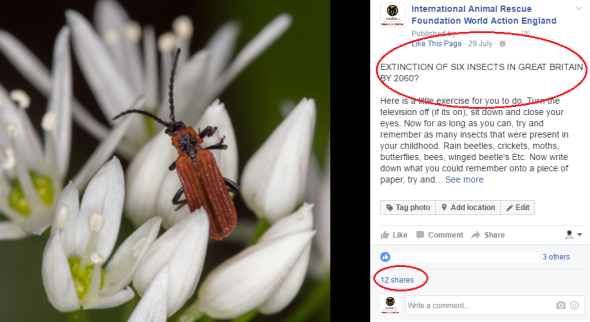
Image: Six UK endemic insects facing extinction by 2060.
The article above unfortunately doesn’t depict a cuddly white spider. What it does show though is one of six species of UK endemic insects, that come 2060 will be EXTINCT (unless of course you want them to go extinct?). Meanwhile the cuddly white spider will still be doing the rounds on Google, and probably within the shops too. Some 1,500 people actually bothered to take note of the importance relating to the article above, and a further 12 people shared the post. Humans don’t actually need white cuddly plush spiders to survive. We do though need REAL INSECTS to pollinate 35% of the globes crops that require insects to pollinate them, to feed us, and animals. The Cosnards Net Winged Beetle (pictured above) will be extinct in under 8-10 years, and is now located within only three protected zones in the UK.
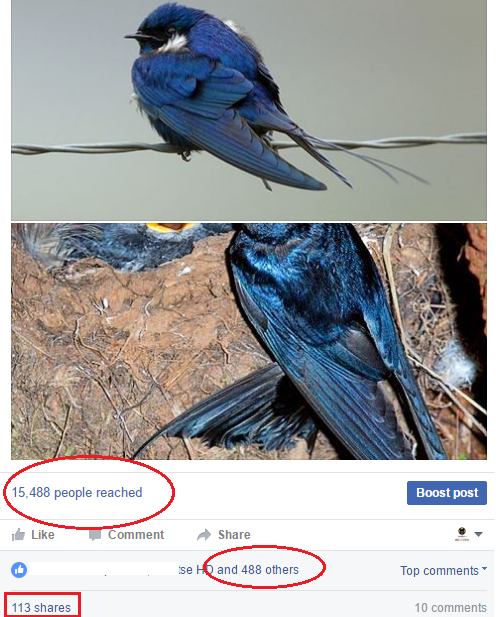
Image: African Blue Swallow - Extinction is Imminent.
Every time I hear about the plight of the blue swallow I really do have to push the awareness and education arm, simply because many people don’t care, or when they do, they soon lose interest over that of a non-endangered dog or cat that is about to be butchered within the pet meat trade. I’m all up for stopping the pet meat trade, however I also know where my priorities lie. The African blue swallow will be extinct within five to six years (max), unless people begin showing interest, creating awareness, donating to blue swallow protection groups, and helping to preserve the species. I wrote ONE SENTENCE relating to a FAKE WHITE SPIDER, and thousands of people took notice of it. Yet I have to write many paragraphs, as well as publishing many images on a single bird just to grab the public’s attention. Why do I have to do that, and why can’t we all show the same interest for all, as we did to the white fake tarantula?
“DO YOU SEE WHERE I’M COMING FROM NOW?”
Come 2100 the world will be facing mass extinctions of birds, insects, frogs, toads, plants, and many mammals, not forgetting mass deforestation, habitat destruction, and land loss due to increasing human population rates. If neither of us begin taking notice of every single animal and plant, but continues to take more notice of either fake animals or those animals that are cuddly, sweet looking, or pets. Then we may as well kill ourselves and stop the human production cycle, because come 2500 there is going to be little remaining for our children, their children and so on. Research it for yourself. Research how much land the globe has lost, how much green forests we’re losing, extinction of flora and fauna, down to increasing housing development, industrialization, how long humans are now living for, and human population (increasing every year).
“GET YOUR PRIORITIES INTO GEAR BEFORE ITS TO LATE”
I will be conducting more of these experiments online and will be watching very carefully how the general public interact with each critically important post. We humans have created many problems on Planet Earth. Now is the time to begin fixing them.
Dr Jose Carlos Depre PhD. MEnvSc. BSc(Hons) Botany, PhD(NeuroSci) D.V.M.
Environmental & Human Scientist.
Chief Environmental Officer.
August 1, 2016 | Categories: You must be the change you want to see in the world | Tags: Albino Tarantula, Conservation, earth, Extinction, plants, Social Experiment, White Spider, Wildlife | 3 Comments
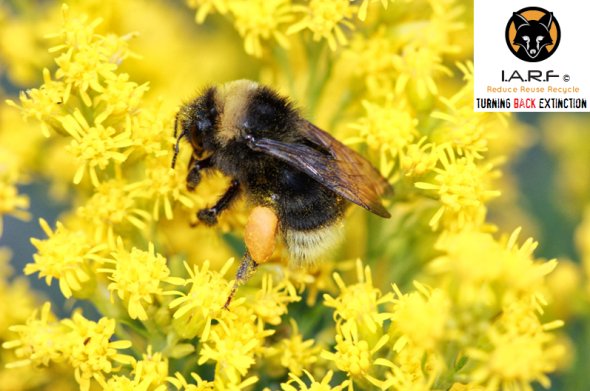
Endangered Species Monday: Bombus occidentalis
“1/3 bites of food we eat comes from a plant that was pollinated by a bee”
What are we humans doing to Planet Earth?, We are destroying so many pollinating animals, that soon they’ll be none left. When or if that day occurs, when there are no more pollinators, we ourselves will be fighting to stay alive, can you imagine that? Human extinction is slowly in the making… …No matter how many vegans or vegetarians there are, we all require plants. No plants = No life!
That’s a Scientific Fact of Life!
Dr Jose Depre
This Monday’s Endangered Species Post (E.S.P) I document on the Western Bumble Bee. Scientifically identified as Bombus occidentalis this particular species of bee is listed as (vulnerable), and is now nearing complete extinction within the wild, despite conservation efforts aimed at reducing dangers, things certainly are not looking good for the bee, or crops the species pollinates either. Image credits: Rich Hatfield
The species was identified back in 1858 by Dr Edward Lee Greene, Ph.D, (August 10, 1843 – November 10, 1915) was an American botanist known for his numerous publications including the two-part Landmarks of Botanical History and the naming or redescribing of over 4,400 species of plants in the American West.
Endemic to: Canada (Alberta, British Columbia, Northwest Territories, Saskatchewan, Yukon); United States (Alaska, Arizona, California, Colorado, Idaho, Montana, Nebraska, Nevada, New Mexico, Oregon, South Dakota, Utah, Washington, and Wyoming). To date we still don’t know what the “exact current rate of decline is”, or even if the Western Bumble Bee is going to be with us within the next decade. Its ‘likely that based on current surveys the species will be extinct within the next 10 years (max)”.
Since 2008-2014 there has been quite a significant rate of decline st 11%-12%, sparking concerns that the Western Bumble Bee ‘may eventually be listed as critically endangered’ within the United States and Canada. Scientists confirmed that in one area which is [unknown], possibly the United States via field surveys the species was not found during the years of 2003-2007 (which is of course quite concerning), especially when the species is a major pollinator, and has been seen only in very low numbers at (one to seven per year) each year from 2008 to 2014.
A study conducted focusing on ‘range decline’ relating to some eight separate species native to the United States, showed that the Western Bumble Bee species alone had decreased in population size within its (range), by some 28% (EST) between the years of 2007-2008. A further study conducted by conservation scientists concluded that by 2007-2009 surveys detected the species only throughout the Intermountain West and Rocky Mountains; it was largely absent from the western portion of its range.
Further declines have been reported within the [US] states’ of Oregon and Washington, however populations seem to be somewhat stable within (northeastern Oregon). Populations are also to a degree stable within Alaska and the Yukon. Average decline for this species was calculated by averaging the change in abundance, persistence, and EOO.
- Current range size is estimated to be at some 77.96%
- Persistence in current range relative to historic occupancy: 72.56%
- Current relative abundance relative to historic values: 28.51%
- Average decline: 40.32%
From viewing all data records I can confirm that the (exact rate of decline) within the species range, and its persistence total some 20%, with a 70% rate of decline in ‘abundance’. Surveys have also proven the this decades rate of decline is bar far lower than the last decades, which again raises some rather large concerns about a near future extinction occurring.
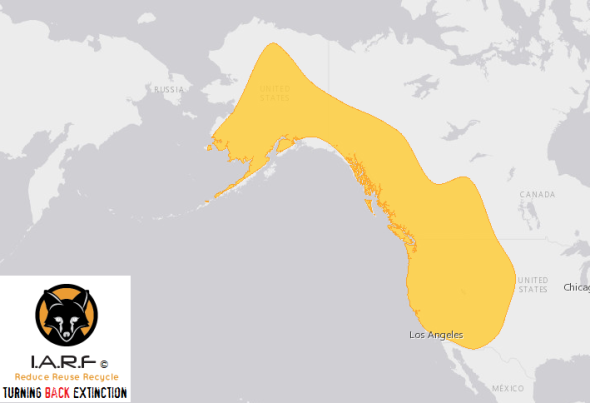
Image: Western Bumble Bees’ extant zones.
In the past, B. occidentalis was commercially reared for pollination of greenhouse tomatoes and other crops in North America. Commercial rearing of this species began in 1992, with two origins. Some colonies were produced in rearing facilities in California by a company which imported the technology for rearing bumble bees and applied it to rearing B. occidentalis locally in California.
This same year, a distributor for a competitor which did not have rearing facilities in North America at the time was granted permits by the US Department of Agriculture – Animal and Plant Health Inspection Service (USDA-APHIS) for a three year window of time (1992-1994) to export queens of B. occidentalis and B. impatiens to European rearing facilities for colony production.
Following rearing, these colonies were then shipped back to the U.S. for commercial pollination. In 1997, commercial producers began experiencing problems with disease (Nosema) in the production of B. occidentalis. Eventually, the availability of B. occidentalis became critically low, and western crop producers who had become dependent on pollination provided by this species began requesting that APHIS allow the shipment and use of B. impatiens in western states.
In 1998, the USDA-APHIS issued permits to allow B. impatiens to be used in the western U.S. However, within a few years, the USDA-APHIS stopped regulating the interstate movement of bumble bees altogether, citing their lack of regulatory authority. Bombus occidentalis is no longer bred and sold commercially and B. impatiens is used widely in the western U.S. One has to wonder though that since the the US Government stopped granting permits for Bombus occidentalis mostly due to species decline, primarily due to human ignorance, will the same rate of decline now be seen with the species B. impatiens?
Currently to date the only ‘known conservation actions that are under way is that of management, research and surveys’, meanwhile its likely that come the next decade we’ll have lost the species due to a lack of improving/increasing populations, and habitat while failing to decrease disease and virus.
THREATS
Populations of this declining species have been associated with higher levels of the microsporidian Nosema bombi and reduced genetic diversity relative to populations of co-occurring stable species. The major decline of the subgenus Bombus was first documented in B. occidentalis, as Nosema nearly wiped out commercial hives, leading to the cessation of commercial production of this species. Wild populations crashed simultaneously and the closely related B. franklini has been pushed to the brink of extinction.
However, Koch and Strange (2012) found high levels of infestation by Nosema in interior Alaska where this bumble bee was still quite common. In addition to disease, this species is faced with numerous other stressors including habitat loss and alteration due to agricultural intensification, urban development, conifer encroachment (resulting from fire suppression), grazing, logging and climate change.
Modifications to bumble bee habitat from over grazing by livestock can be particularly harmful to bumble bees by removing floral resources, especially during the mid-summer period when flowers may already be scarce. In addition, livestock may trample nesting and overwintering sites, or disrupt rodent populations, which can indirectly harm bumble bees. Indirect effects of logging (such as increased siltation in runoff) and recreation (such as off-road vehicle use) also have the potential to alter meadow ecosystems and disrupt B. occidentalis habitat.
Additional habitat alterations, such as conifer encroachment resulting from fire suppression, fire, agricultural intensification, urban development, and climate change may also threaten B. occidentalis. Insecticides, which are designed to kill insects directly, and herbicides, which can remove floral resources, both pose serious threats to bumble bees. Of particular concern are neonicotinoids, a class of systemic insecticides whose toxins are extraordinarily persistent, are expressed in the nectar and pollen of plants (and therefore are actively collected by bumble bees), and exert both lethal and sublethal effects on bumble bees.
Since B. occidentalis has recently undergone a dramatic decline in range and relative abundance, reduced genetic diversity and other genetic factors make this species especially vulnerable to extinction, and may lead to increased pathogen susceptibility. Recent research indicates that populations of B. occidentalis have lower genetic diversity compared to populations of co-occurring stable species.
It is therefore regrettable, that despite research, management and surveys - extinction is imminent, when though, we simply don’t know, however when it does happen, it means that yet another pollinator that we humans and animals depend on will be gone for good.
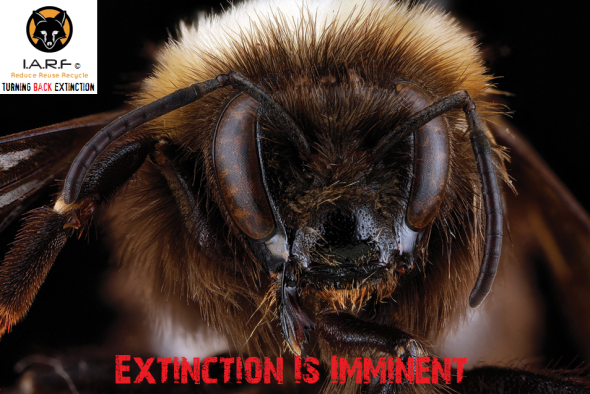
Image: Female B. occidentalis
Humans will never learn or understand just how critically important our wildlife is, until its gone. They’ll then be fighting over themselves, fighting to stay alive. By that time, human extinction will already be in the process.
Dr Jose C. Depre
Chief Environmental & Botanical Officer.
Follow me on Twitter here: https://twitter.com/josedepre11
February 29, 2016 | Categories: You must be the change you want to see in the world | Tags: America, Animal and Plant Health Inspection Service, Bee, Bees, Bombus occidentalis, Bumble Bee, Canada, Colony Collapse Disorder., Crops, Dr Jose C. Depre, Edward Lee Greene, Extinction, Flowers., Food, Fruit, Insects, Mexico, Monday's Endangered Species, Nosema, plants, Pollinator, Rich Hatfield, US Department of Agriculture, USDA, Veggies, Western Bumble Bee, Wildlife | Leave a comment
International Animal Rescue Foundation © takes conservation and botanical horticulture seriously, and seeing the recent deforestation over the past two decades with little in the way of governmental action to replant tress and medicinal plants back within our society to replanting rainforests that would sustain our ecosphere.
Tree plant back also rebuilds natural wildlife havens and creates a much cleaner atmospheric environment, slows soil erosion, reduces pollution, increase’s oxygen to even softening the lines of large structural buildings and much more.
So we thought it a good idea to encourage people whom view our pages, news and media site to the general World Wide Web to now undertake a simple task of planting “one tree” for Earth Day April 22nd 2013.
We launched Operation Plant Back this year January 7th 2013 and have already seen a staggering 11 educational unit’s respond back to us that will be planting trees on the 22nd April 2013 for World Earth Day, how amazing is that?
So we have all decided that tree planting would be the most beneficial, positive and a constructive eco-friendly challenge to give back to the earth from which we take from everyday with regards to palm oil, pulp and paper, home and commercial wood furniture, and much more that see’s our forests and medicinal plants to wildlife pushed further to extinction with wildlife displaced because of obsessive human consumerism, human over population to even wildlife murdered as they have no homes to go to thus encroaching on to human territory that was once their home.
The removal of trees is one of the largest threats to our current wildlife, environment and air quality. At this present time, and should we continue to ignore this environmental catastrophe then regrettably we will view a staggering 80% of all medicinal plants and green forest wiped out for human greed. So let’s take action now put our trees back on the global map where they so rightfully belong.
We are not asking you to plant a forest or even a woodland glade were merely asking you to take a trip down to your local arboretum or garden nursery and purchase anyone of the trees that we have listed below.
We have also picked the most important species of tree’s that encourage wildlife into the area or garden that range in price from $10.00 to $50.00 depending on whom you purchase from.
We recommend that you also purchase from well-known suppliers that have expertise within botanical horticulture and are not the average Joe that’s grown saplings incorrectly thus seeing the tree that you and your loved one’s will nurture and tend to later perish within a few weeks or years.
Planting and then watching your own tree grow to encouraging children to become involved is also rewarding. You can keep charts, diary’s, to documenting on the new wildlife that enters your garden from butterflies, squirrels, to bees, bats and aphids, even foxes, and wild birds such as Sparrow Hawks, Starlings, Owls and Hawks that love hiding out amongst the canopies.
Starting from scratch is also educational for many children and families alike and proven studies have shown that our youth treat that tree or plant like one of their own. My own children engage in botanical horticulture every day and they adore viewing the wildlife visiting in the daytime, evening or night, to collecting fruits from the trees that they then sell at local farmers markets, to documenting on what they have planted thus presenting this in a thesis at school which encourages their friends to also become involved thus creating a mini yet educated “youth environmental group.
Medical benefits – Children that suffer from Autism, Attention Deficit Hyper Activity Disorder or ADD, Downs Syndrome, to other Neurodegenerative disorders actually benefit from what we call therapeutic horticulture which has been proven many times to stimulate their senses through touch, sound, sight, smell to texture.
A simple grassy plant such as the Black Zebra Grass to Bamboos actually stimulates children’s senses that suffer from a wide range of N.D.D’s, the sounds of rustling leaves and grasses to wild birds chirping aids their conditions too.
Below is a small comprehensive guide on some of the best tress within our Mother Nature guide that will encourage wildlife within your garden. Most importantly though by planting just one or more tree’s your also actively participating in reducing your carbon emission footprint as well as preserving the natural environment for years to come.
Listed below are ten tree species that will encourage the following wildlife to enter your garden along with promoting botanical education and aiding the environment;
- Foxes and Badger’s
- Wild birds and bats
- Insects
- Aphid
- Bees (Currently under threat)
- Decrease noise pollution
- Soften structural design
- Decrease your environmental carbon foot print
- Filter out toxic air pollution
- Preserve shade loving plants
- Increase home privacy
- Protect the family home from wind damage
The ten trees below include the common names and bionomical names too plus a rough price tag in Euros, happy planting everyone.
Sea Bukthorn - Hippophae rhamnoides

Wild cherry - Prunus avium

Field maple - Acer campestre

Whitebeam - Sorbus aria
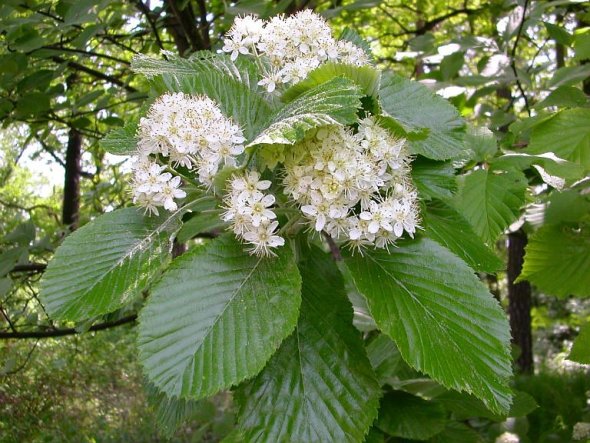
Elder - Sambucus nigra
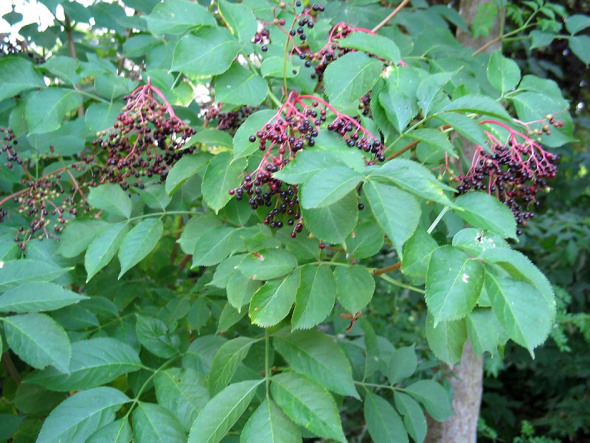
The next five tree’s that I have included within this index are “sub-tropical to tropical” that may or may not be suitable to the European Environment as of the harsh changes in atmospheric pressure, extreme arctic winds, intense persistent rains and drought to high / extreme hurricane winds winds too. One can grow these species but I would highly recommend that in colder nations you at least incorporate a “microclimate” protection that encompasses the species[s]. Within the normal climate though such as Asia to Africa, Australia to New Zealand then this is not of any issue to the species and growing to planting would no different to the above native European species.
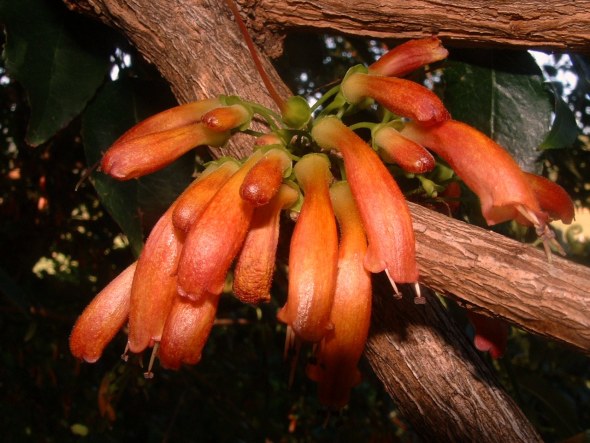
Tree fuchsia - Halleria lucida
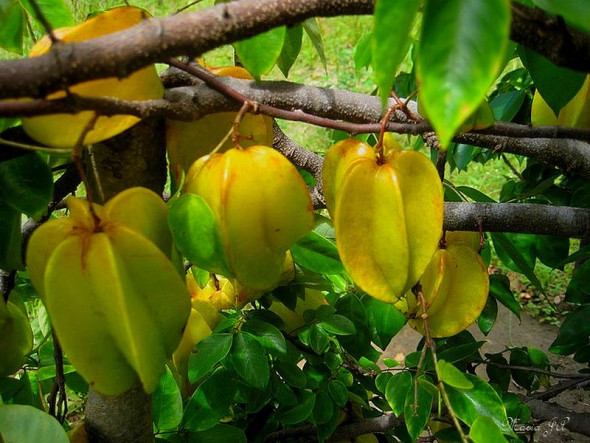 Averrhoa carambola – Star fruit tree
Averrhoa carambola – Star fruit tree
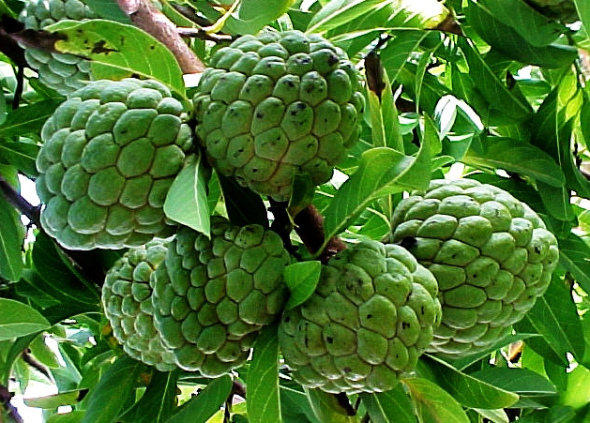 Thai custard apple fruit tree - Annona reticulata
Thai custard apple fruit tree - Annona reticulata
 Dragon fruit tree - Hylocereus undatus
Dragon fruit tree - Hylocereus undatus
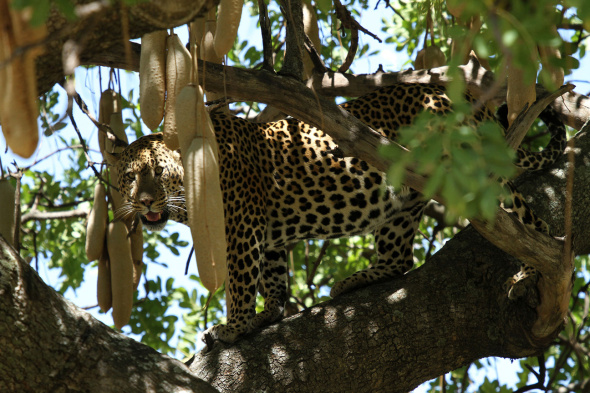 Sausage tree - Kigelia pinnata
Sausage tree - Kigelia pinnata
There are many species of tree that one can plant for earth day April 22nd 2013, and you can pick from thousands of different species that range from large “sub shrub tree’s” to actual tree’s themselves. The ten above are native to Europe, Asia and Australia and Africa. There are some important things you must remember though before planting a tree.
- Never plant a deciduous tree above a pond – Never plant a tree to close to neighbours houses that could later on obscure their view/infringe on their human rights
- Trees that have a large spread and can exceed 20 feet – We advise that you DO NOT plant within 20 metres of your home
- Never plant trees next to gas, water, electric, sewage or underground telecom lines as damage to them from the tree’s tap or lateral roots could end up with you facing a hefty bill
- Before you plant a tree in a public park you MUST always obtain permission of the parks officer or local municipality council/s
- Don’t plant trees to close to “structures” such as house’s or fences
- Please make sure that you care for tree, you plant it correctly as shown in the video below, and that you always maintain the tree as to not cause neighbour or other conflict from over hanging branches
- Do not disturb ANY bat or WILD BIRD populations that nest within the tree’s as of protection orders and Animal Welfare Act
- Do not plant trees that have very small girths (thin main trunk circumference) next to houses such as Birch, Cherry or Eucalyptus. High winds could cause the tree’s to topple onto you’re or your neighbours’ homes causing damage to loss of life or human injury
- Trees are not plants, you cannot just prune a tree or dig it up, we recommend that you educate yourself on how to maintain trees or every year after the tree is at a semi mature height (20 feet) that you call in an arboriculture expert (tree surgeon) that specialises in trees, pests and diseases
- Never spray weed killers next to the tress or on them
- Should you notice pests and diseases, strange leaf discolouration, leaf mites, sudden trunk death that you call you tree surgeon immediately
- Water your sapling in the summer 2-3 times a week of at least 5-6 gallons of water
For more information you can contact our botanical teams at
info@international-animalrescue-foundation.org.uk
Director and International Team of Delegates and Ambassadors
www.international-animalrescue-foundation.org.uk
www.speakupforthevoiceless.org
April 7, 2013 | Categories: You must be the change you want to see in the world | Tags: climate, nature, plants | Leave a comment

Mother Nature has created such diverse species of mammalians, reptilians, aquatics, to arthropods (arachnids) and botanical species that are so complex and versatile we still as Homo sapiens do not fully know on understanding everything about such fascinating species of mammals to avian species and insects and fungi to even viruses that are all living around us, on us to within us.
I have picked out a number of species from the quoted above that I have documented on instead of writing up on the everyday issues of animal and environmental welfare, climate destruction to botany and governmental politics to just remind you of what surrounds us to date to no longer living on planet earth.
Keeping mostly out of politics in this draft and focusing on an array of viruses, plants mammals and fish to spiders and birds I would like this document to be used as a form of education but more importantly why we as homo sapiens should respect Mother Nature and what Mother has provided and shown to ourselves to learn rather than eat and destroy for our own greedy back pockets. I have documented on a handful of species of which I shall carry on beefing this particular document up with more facts and more species extant and extinct.
Some pictures to documentation will make you cringe but most I can assure you, you will enjoy and the more we learn the more we become aware of why we should respect what lives around and within, from the most potent and deadliest plant on earth, to bacteria that lives’ within our large and small intestines, and skin to the most fastest land, sea and air mammal or the most deadliest to largest and smallest species on earth. Enjoy - I shall continue updating this weekly.
Most toxic plant[s] on the planet;
Every plant no matter what species is poisonous in one way or the other from a simple English Daffodil that can cause acute dermatitis or gastroenteritis to skin burns, however there are some that you most likely have in your back yard and before I go any further on this, please “don’t dig them up and kill them” learn from them and respect their presence.
Ricinus communis – Castor oil plant.
The Ricinus communis I must say has to be one second of the most toxic and extremely harmful plants on the planet to date. Belonging to the monotypic genus it is better known as a “spurge” and with large palm shaped leaves similar to that of the Fatsia japonica.
The leaves are very large and within the rain forest can grow to around triple the size of your hand. Growing mainly in America, Asia and the European Union the Castor oil plant produces “beans” which are not true beans and (most certainly not edible).
Now you REALLY NEED to read this and please pay attention, the castor oil plant and the “false castor oil plant” are completely different, the false castor oil and the castor oil plant look similar however the false castor oil plant has non-glossed leaves yet the castor oil has dull looking green leaves of which both are mostly ever green.
Keeping to the “Castor oil plant” the seeds (beans) contain between 40% and 60% oil that is rich in triglycerides however it’s also rich in Ricin an extremely toxic substance that can and will kill, the seeds (beans) have to actually be processed to cause any real harm.
Ricin is present in low levels throughout the plant, but it’s largely concentrated in the seed coating. Seed poisonings are rare and usually involve children and pets, but they can be deadly. As few as three seeds, which are green with brown markings, could kill a child who swallows them easily.
Symptoms of castor bean poisoning include nausea, abdominal cramps, vomiting, internal bleeding, and kidney and circulation failure. Many people suffer from an allergic reaction to the dust from the seeds and may experience coughing, muscle aches and difficulty breathing. Exposure to the dust is most common in areas where the beans are processed for commercial use. In ancient times, the castor bean was used in ointments, and allegedly, Cleopatra applied the oil to the whites of her eyes to brighten them. Ricin is better explained within this link – http://www.bt.cdc.gov/agent/ricin/facts.asp
Castor oil is a mild-tasting vegetable oil that is used in many food additives, flavourings and in candy production. It’s also available to the consumer as a laxative and to induce labour (though no scientific evidence shows it’s successful in inducing labour although I really do advise as a botanist to please SEEK MEDICAL ADVICE and leave the plant’s seeds well alone) please don’t destroy the plant if you have children or pets, instead educate them on the plant and for more information you can email myself at info@international-animalrescue-foundation.org.uk or join our botanical group here on Facebook - https://www.facebook.com/groups/353161988048334/?fref=ts
There are many other plants that are toxic such as the deadly night shade Atropa belladonna to the common Yew Taxus Baccta, or the Monks Hood Lilly Aconitum selections or Foxglove better known as the Digitalis (used widely in cardiac pharmaceuticals which are very effective and potent).
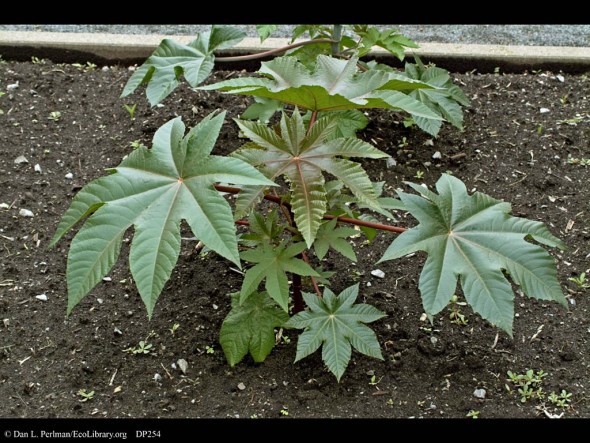
Fastest aquatic species on the planet;
Well there seems to be much speculation on this however it’s time to blow the speculation out of the water. At a total speed recorded in all oceans that it swims the fastest swimming fish on earth is in fact the Sailfish better known as Istiophorus albicans bust must not be confused with the sword fish or marlin.
Easily reaching speeds of 0-69mph this fish is one hell of swimmer using its lateral line and sheer muscular power in its rear the billfish as it’s more commonly known can swim the one hundred meter Olympics in 4.8 seconds. The Istiophorus albicans is prized as a game fish due to its agility and sheer power in giving fishers (hunters) a challenge for their money.
Its sail is mostly kept folded down when swimming of which is seen to leap high out of the water and back in again when excited. The Bill can change its body colour when excited or under threat to. Some fishes that can reach speeds “near to the 69-70mph mark are the Marlin, Marlin’s common name is thought to derive from its resemblance to a sailor’s marlinspike. Marlin are incredibly fast swimmers, reaching speeds of about 68 mph. Predators include the white shark and shortfin mako. Other fishes are Bluefin tuna that are found throughout the Atlantic and Pacific oceans in subtropical and temperate waters.
They form schools while young; large schools are easily observed at night. The Bluefin is one of the largest tuna species. Killer whales and pilot whales feed on them most often.
The Bluefin is highly valued as a food for human consumption sold both fresh and frozen. Quality fish are especially favoured in Japan, where they are sold at the high price in fish markets. The Bluefin tuna is also a popular game fish, especially in the USA the Bluefin can reach a top speed of 0-46mph we rather see them NOT hunted though as of dwindling ocean stocks and the torture that they go through when line fishing.
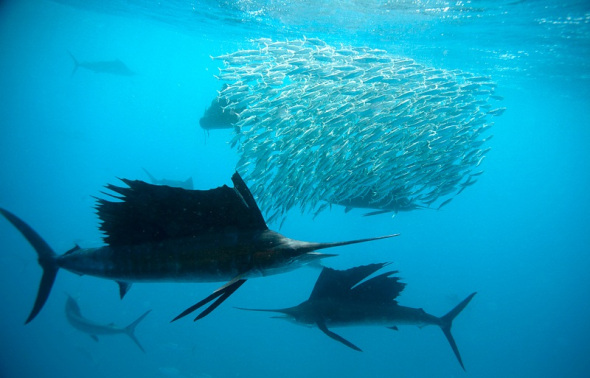
Animal that consumes the most food;
I found this to be a difficult one to explain as one would believe that the based on the size of the “prey” or “fruit, nuts to other” in (size) or the “number of humans” would be the most with regards to consumption. Such as the male Lion Panthera leo that consumes by far more than that of the female when not in gestation or milking and easily finishing of a springbok or wildebeest however this simply goes on the (size of the animal[s]).
The Blue Whale Balaenoptera musculus has to be the largest of all consumers and the largest of all living species on the face of the planet weighing in at a whopping one hundred and ninety seven tons with some species found to be weighing in at over 200 TONS. How much can it consume though? Well let’s take a look.
A simple adult can consume over 60 million krill a day based on “what ocean they are in” and maturity however the normal estimated feed its around 45-60 million krill, its most chosen food. This weighs in at a total feed size of exactly 3600 kg (8000 lb) of krill in a day “that’s one hell of a lot of fish” when you think that the average weight of a human is 194.7 pounds, so you can quite easily see the difference here. Humans though do consume by far more in the way of (food) however I am explaining the “individual species” and not the “entire species consumption of over 8.9 billion humans on planet earth to date”.
The Blue Whale at (adult) stage has to consume this much in species prey to keep its 1.5 million kilocalories up or it shall become underweight which then can effect behaviour thus beaching itself although there is little known on this particular behaviour and what the real reason is they beach.
Balaenoptera musculus can take in as much energy at 1.5 million kilocalories as it gives out or (expends) however with this feed amount they can conserve energy extremely easily by swimming slowly and storing krill in its mouth thus slow feeding similar to a IV therapy (slow release intravenous drip) quite amazing.
Other animals that are known to consume by far more than the average are Humming Birds Archilochus alexandri, that consume more than their body weight of insects and nectar a day along with Shrews Sorex araneus that consume three times their body weight in food a day.
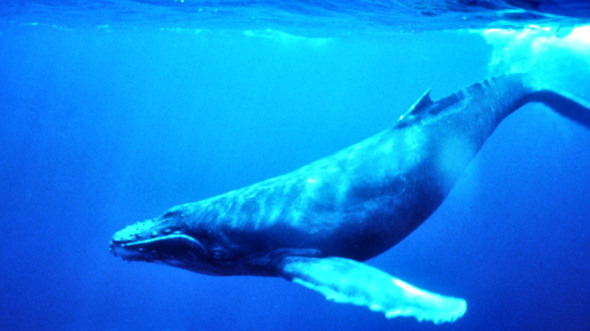
How many “species of good virus live within the human body”;
I loved this question like the rest that have been asked by many members of the public that email us every day however this has to be the most intriguing to fascinating but one that I simply cannot answer in full as to actually count how many individual same species of good and bad viruses in the human body it would take an extremely unhealthy human and healthy human plus a good year to evaluate.
In total leaving the bad bacteria out there is a total species count that are “good bacteria” living within our bodies of seven good species although there are “more” these are primarily the most important players and I have listed them below.
LIVING AND THRIVING ORGANISMS
Throat – Species – Neisseria lactamicia = 4,154 species
Behind your ears - Species – Propionibacterium acnes = 2,359 species
Nostrils – Species – Staphylococcus epidermidis = 2,264 species
Tongue – Species – Streptococcus salivarius = 7,947 species
Inner elbows – Species – Corynebacterium simulans = 2,012 species
Vaginal opening – Species – Lactobacillus acidophilus = 2,062 species
Large intestine – Species – Bacteroides thetaiotaomicron = 33,627 species
Total species count of good virus microbe species = 55,425 (and that’s just good bacteria)
All species above are major players however like explained this is simply the “major players” as listed in a 2013 science biology journal. Within our bodies human cells are outnumbered ten to one by bacteria. Some eight million genes function in this invisible universe more than three hundred times the number in our own cells. Though some of our microbial tenants pose threats, we literally can’t live without most of them. They help digest our food, grade our immune system, and ward of deadly germs.
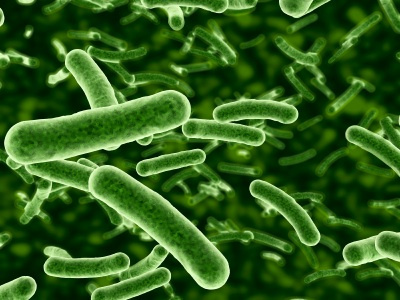
Belly Button?
Yes, microorganisms live on your skin, even though you can’t see them. After it takes a tour of your belly button, the swab gets wiped on a specially prepared dish, where the bacteria can grow. Then the researchers figure out what’s growing on you.
So far, the most common colonies are from Staphylococcus epidermidis and Micrococcus luteus. Have they found any rare, truly bizarre bacteria? Why, yes — in Dunn’s own belly button. It’s a bacterium called Enterococcus mundti and it was only recently discovered by scientists. “(It’s) found on me, soybeans, and silk moths. Go figure,” Dunn said.
It’s a tricky thing using those special plates — called agar plates — to grow bacteria. Some bacteria grow like crazy on the plates, so we know the most about those kinds, Dunn said.
Plenty of bacteria remain undiscovered. And we don’t know much about many of the bacteria that live on our bodies because we can’t grow them.
Dunn and his team are extracting bacterial genetic information from the belly buttons, and by literally reading it, they know which species of bacteria live on the skin. “When it is done, we will undoubtedly find some very rare species, some of them probably new to science,” Dunn said.
Are you picking your nose?
There are many far-fetched ways to die in this world. Picking your nose is one of them. Yes, it’s true. You really can die from picking your nose. Simply put, there is a bone in the nose called the ethmoid bone.
This bone separates the nose from the brain. Though you would more than likely need a really long fingernail, or other long object to get up there, it is indeed possible to do so and it “does happen”. As a matter of fact, if you accidentally poked through this bone, brain fluid could be leaked-causing meningitis, which definitely is a killer.
So you see, picking one’s nose seems harmless. And in most cases, it is. Sitting at that stoplight, in the private comfort of your vehicle, does not give you anonymity.
But for some reason, it’s the most popular place for people to dive into their nasal cavities. In these instances where you feel compelled to see what’s up there, it’s best to wait until getting to a restroom.
Make sure that before touching any “open” areas of the face (ie. eyes, nose, and mouth) -that you wash your hands thoroughly, as this is how viruses are most frequently spread.
Most deadly predator on earth;
Let’s face up to some actual real evidence here leaving out the “facts” first. The Homo sapiens are the most deadliest predator that can kill anything, destroy through negligence and harm without even touching, yes “we are the most deadliest from (evidence)” however this is about FACTS and the most deadliest predator as much as you think we are YOUR VERY WRONG.
The most deadly predator actually lies within every nation on earth, Lion? Bush Elephant? Cape buffalo? Well they are dangerous and very unpredictable but they are nowhere near as dangerous as this “microbe”.
Clostridium Botulinum is the most toxic animal on the face of the planet and it is a killer and has killed many thousands of people and still kills today.
Clostridium botulinum is a Gram-positive, rod-shaped bacterium that produces several toxins. The best known are its neurotoxins, subdivided in types A-G, that cause the flaccid muscular paralysis seen in botulism. They are also the main paralytic agent in botox. C. botulinum is an anaerobic spore-former, which produces oval, subterminal endospores and is commonly found in soil.
One teaspoon of this bacterium, properly distributed, could kill every single human being in the United States. About 9 lbs (4 kgs) could kill every human in the world. Like the venom of botulinum it is a neurotoxin, stopping communication between the brain and the muscles, resulting in paralysis of the diaphragm, then asphyxia = immediate and extremely painful death.
Botulinum is found in the soil of every continent and ecosystem on Earth, from the Sahara Desert to Antarctica. It is found in soil brought up from the ocean floor. It requires absolutely perfect conditions in order to become active and thus dangerous. You would not be able to contract the toxin by eating dirt, since your digestive juices are too acidic to allow the bacterium to grow and produce the toxin.
But the spores are extraordinarily difficult to kill, able to survive in boiling water for 10 minutes if you were to can food without boiling it (cold canning), airborne spores may enter the oxygen-free environment of the food and grow very quickly. Upon eating the food, the toxins would be present in your body immediately, and eating only a nibble of a green bean is more than sufficient to kill you within a day. No animal is known to have immunity to botulinum. A mere 1 nanogram per kilogram dose will kill any living organism on the planet.
An elephant weighing 5,454 kgs (12,000 lbs) (4 tons) would die in less than 3 days after consuming 5,454 ngs of botulinum toxin. This is equal to 0.005454 milligrams. Still believe that we are the most dangerous organisms on earth? Should some bright spark decide on processing botulinum and then placing that in a simple weapon that explodes then (the entire continent that it explodes in are doomed) and humans would die an extremely painful and horrifying death. There are certain individuals that have this deadly bacteria stored of which we are not advertising, it’s locked in secure chambers, deep underground, and the doors of the chambers require 5 alternative passwords and five people that are changed every day to access this most destructive and most deadliest bacteria.
From investigations on botulinum we are more than aware of whom has this bacteria in certain “forms” and what the bacteria is placed in, it’s also known the locations, and why certain individuals are very nervous when it comes to civil disobedience in countries such as the U.A.E
However with regard to animals the cape buffalo is by far the most dangerous game animal on Earth. It is sufficiently thick-skinned to require an elephant rifle, and is the animal most responsible for the introduction of double-barreled rifles. A double-barreled rifle offers the hunter an immediate follow-up shot to finish a wounded animal, and cape buffaloes can be counted on to withstand the first shot, even if they are struck in the heart, and still charge. The .585 Nyati caliber was invented for use against this animal. Nyati is Swahili for Cape buffalo.
You may think touring Africa’s grasslands in a safari jeep is safe, and were it not for the Cape buffalo, you would be fairly correct. They may charge without any provocation at all, and they overturn jeeps, trucks, and vans by ramming them headfirst. A 2,000 lb male can run 40 miles an hour for more than 100 meters. Some professional hunting guides refuse to hunt them, for fear the paying hunter will miss. The Cape buffalo gores and tramples to death over 200 people every year, more kills, possibly, than any other African animal. Please NOTE that International Animal Rescue Foundation is against ALL HUNTING.
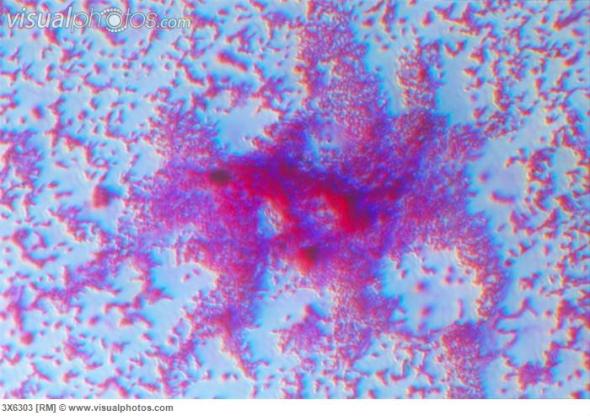
What species has the best eyesight?
Again there is much speculation over this with one saying the Eagle, the other stating the wild cat, FACT the animal that has the strongest and most powerful eyesight is Great horned owl, Bubo virginianus better known as the Tiger Owl.
The Great horned owl’s spectacular binocular vision, allows them to pinpoint prey and see in low light. The eyes of a Great Horned Owl are nearly as large as those of a human being and are immobile within their circular bone sockets. As a result, instead of turning its eyes, an owl must turn its whole head, the neck capable of rotating a full 270 degrees, in order to see in various directions without moving its entire body.
Owls hunt mainly by watching from a snag, pole or other high perch, sometimes completely concealed by the dusky night and/or partially hidden by foliage. From such vantage points, owls dive down to the ground, often with wings folded, to ambush their prey. If you placed a newspaper on a chair, a Great Horned Owl could make out every word on that paper from 50 yards away.
However – Interesting point here as the Great horned owl is not the only animal with the best eye sight, the Mantis Shrimp, can see in a broad spectrum of light that includes infrared and ultraviolet of which has the most powerful eyesight within the aquatic world.

Largest prehistoric animal;
Again this the closest that one could come to as there are still exploration teams working on sites around the world and also items that are “foot prints” and also prehistoric 40 million year old items under examination that one still has yet to clearly identify.
The largest though that is recorded is by far the sea monster Basilosaurus, King Lizard and this was one hell of a mammal (type) species that is located in many museums around the world from 40-60 million year old fossil remains.
The King Lizard lived around 40 to 34 million years ago in the Late Eocene. First discovered in Louisiana, America it was thought that this “species” (type) was a form of reptilian of which one is still unsure on.
Basilosaurus was highly elongated. It accomplished this through an unparalleled elongation of its vertebrae, and has been described as being the closest a whale ever came to a snake. The skeletal anatomy of the tail suggests that a small fluke was probably present, which would have only aided vertical motion. Most reconstructions show a small, speculative dorsal fin similar to a rorqual whale’s, but other reconstructions show a dorsal ridge. The whale also possessed small, 0.6 meter (2 ft) hind limbs, which clearly could not aid locomotion on a 15–22 meter (50–72 foot) animal.
In 1845, “Dr.” Albert Koch heard stories of giant bones in Alabama, and went down to cobble together a full skeleton. He eventually created a huge 114-foot (35 m) skeleton of a “sea serpent” he called “Hydrarchos”, which he displayed in New York City, and later Europe. It was eventually shown to have come from 5 different individuals, some of which were not Basilosaurus. The remains were eventually destroyed in the Great Chicago Fire.
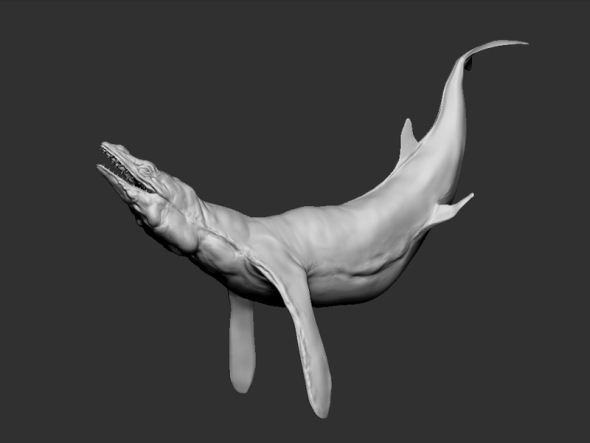
Strongest animal;
One would believe that the Elephant or Rhinoceros was the strongest animal, wrong again. The world’s strongest animal is Archegozetes longisetosus.
The African elephant is by far the strongest living animal but it can only lift 25% of its bodyweight. The tropical species Archegozetes longisetosus is one of the strongest animals in the world, relative to its mass (100 μg). It lifts up to 1182 times its own weight. It’s an equivalent of a human lifting 212000 pounds.
On the other hand, Rhinoceros beetle can carry 850 times its own weight. To put that into perspective that would be like one of us lifting a 65 ton armoured tank.
We should also consider the strength of the jaws. The saltwater crocodile is a fearsome chomper who can inflict a bone-crunching bite that is around 3-4 times stronger than a lion. To give you a rough idea, the force of this bite would be a bit like having a car fall on top of you.
For a more scientific look in to this amazing creature let’s take a look.
The holding and pulling forces generated by claws of the microarthropod Archegozetes longisetosus (Chelicerata, Acari, Oribatida) on three substrates with different roughness (R(a)=0.05 microm, 1 microm, 30 microm).
Holding forces were measured perpendicular to the substrate using a strain gage force transducer; pulling forces were measured parallel to the substrate using an analytical scale. We found a significant positive correlation of surface roughness and the forces generated.
Mites produced holding forces on horizontal rough surfaces (R(a)=30 microm) of up to 1180 times their weight; on vertical rough surfaces (R(a)=30 microm) they can pull with 530 times their weight, effectively involving only two pairs of legs.
The relative forces are five times higher than theoretically expected for organisms of this size (<1 mm, 100 microg) and higher than any relative forces reported for insect claws. Muscles involved in claw action produced stresses up to 1170 kN m(-2), a value that is only excelled by decapod crustacean claw closer muscles. Ours is the first study of performance by chelicerate apoteles and claws and also the first to measure forces generated by any microarthropod.
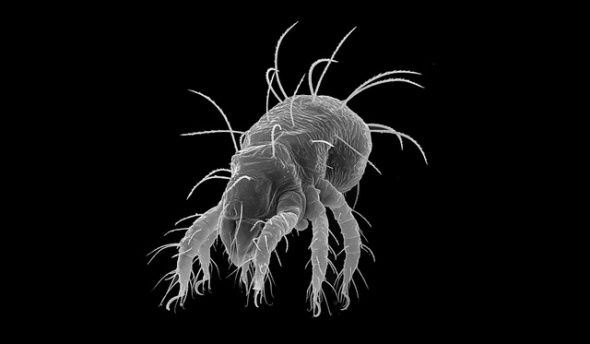
Slowest animal in the world;
There are 3 animals known to be the slowest animals in the world. Sloths move only when necessary and even then very slowly. On the ground the maximum speed of the three-toed sloth is 2 m or 6.5 feet per minute or 0.15 mile per hour.
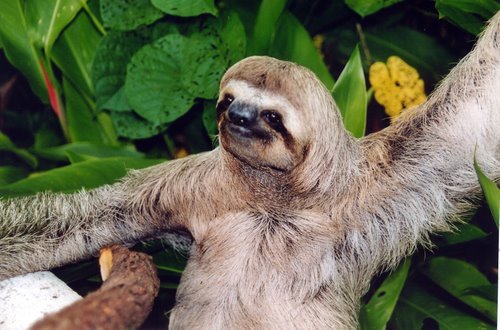
A garden snail’s speed is 0.03 mph (yes a snail is an animal and not an insect). Due to its slowness, the snail has traditionally been seen as a symbol of laziness. In Judeo-Christian culture, it has often been viewed as a manifestation of the deadly sin of sloth. A giant tortoise’s speed is 0.17.
International Animal Rescue Foundations – pick of the month is Scarabaeus
Never underestimate the powers of Mother Nature’s insects as they sure do teach us many facts of life helping us to understand previous living and exploration times to bettering technology.
Animal of the month is; Scarabaeus (Arthropoda)
Dung Beetles - Scarabaeus viettei (one of a type)
Dung Beetles are actually very unique and don’t just muck in with dung as one may believe they do.
The Scarabaeus viettei (one of a type of species from the Scarabaeidae super family) has been noted has been noted as using “polarized light” of which they use the “milky way” to navigate.
A recent study in 2003 showed that Beetle’s use polarized light from the moon to help them move in a straight line (now that’s pretty amazing) but the researchers where surprised to find that insects could actually stay on course even on a moonless night (how bizarre).
To see what else was going on researchers then timed the beetles crawling from the centre of a cylindrical drum to the edge. The drum was open topped so the insects could use the night sky to orientate themselves on a moonless night, the insects took twice as long as they did under a full moon with a cap on that hid the night sky from their view of which they needed six times longer implying that the stars where involved.
Researchers then moved to a planetarium. By switching stars on and of researchers identified the guiding light as the Milky Way. It had been assumed that the insects could not navigate in this way because their eyes cannot make out individual stars. But using the Milky Way does away with such resolution. How strange but factual to know that even the smallest of living species on our planet use such powerful yet small senses that we humans cannot.
Humans can use more or less the same type of star guidance, however we are simply talking about a Beetle that’s by far a lot smaller than the average 5ft 9” human. Just goes to show how important our species of flora and fauna are too us along with combating an array of technological problems.
Was this study carried out by ancient Romans or Egyptians that used the North Star and formations to guide them home? Who knows, what we do know is that we still have a lot to learn from our tiny creatures.
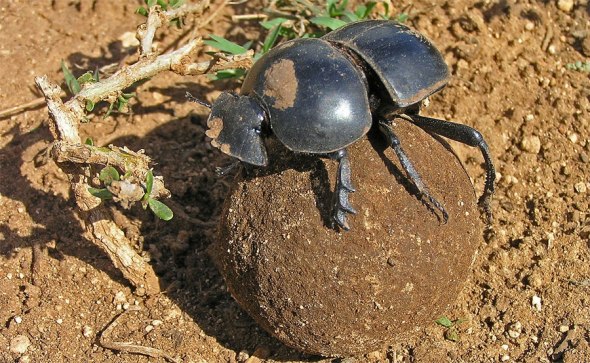
Dr J C Dimetri V.M.D, B.E.S, Ma, PhD , MEnvSc
EMAIL US FOR MORE INFORMATION
INTERNATIONAL ANIMAL RESCUE FOUNDATION
PLEASE DONATE TO OUR CURRENT RESCUE
CONTACT OUR MAIN OFFICE
The video below is an old documentary however there are still NO security measures in place to stop people from purchasing small vile’s of seriously dangerous biological agents or in a more simple terminology “GERMS” that have killed millions of people in the past that terrorists and unit cells now wish to obtain and ARE obtaining.
Another highly dangerous biological weapon is the Spanish Flu (Influenza) 1918 http://www.slate.com/articles/health_and_science/pandemics/2012/12/spanish_flu_mystery_why_don_t_scientists_understand_the_1918_flu_even_after.html
Please note your if you spam this organisation news desk your comments will automatically be placed within spam and report folders of which your IP and email is located then reported automatically. All spam is then deleted that have links or other, if you wish to comment please leave you comment without link to your domain, URL then the comment shall be read, moderated and answered, if you violate these rules you will/could face having your site, link, email closed down. International Animal Rescue Foundation takes internet security seriously, we will not tolerate or accept violations, all emails are subjected to viral/phishing/hacking/ checks before they are even opened. Should an email be received and the named is located within then your IP, Proxy IP, Domain Proxy, Cloud Proxy will and can be traced by our online manned and automatic security team.
To email ourselves for information and advice or other, then please click this link, it’s simple and takes seconds.
Thank you for your co-operation
February 3, 2013 | Categories: You must be the change you want to see in the world | Tags: Animals, climate, Environment, large and small intestines, nature, plants, science, Top Stories | Leave a comment
 Averrhoa carambola – Star fruit tree
Averrhoa carambola – Star fruit tree Thai custard apple fruit tree - Annona reticulata
Thai custard apple fruit tree - Annona reticulata Dragon fruit tree - Hylocereus undatus
Dragon fruit tree - Hylocereus undatus Sausage tree - Kigelia pinnata
Sausage tree - Kigelia pinnata































